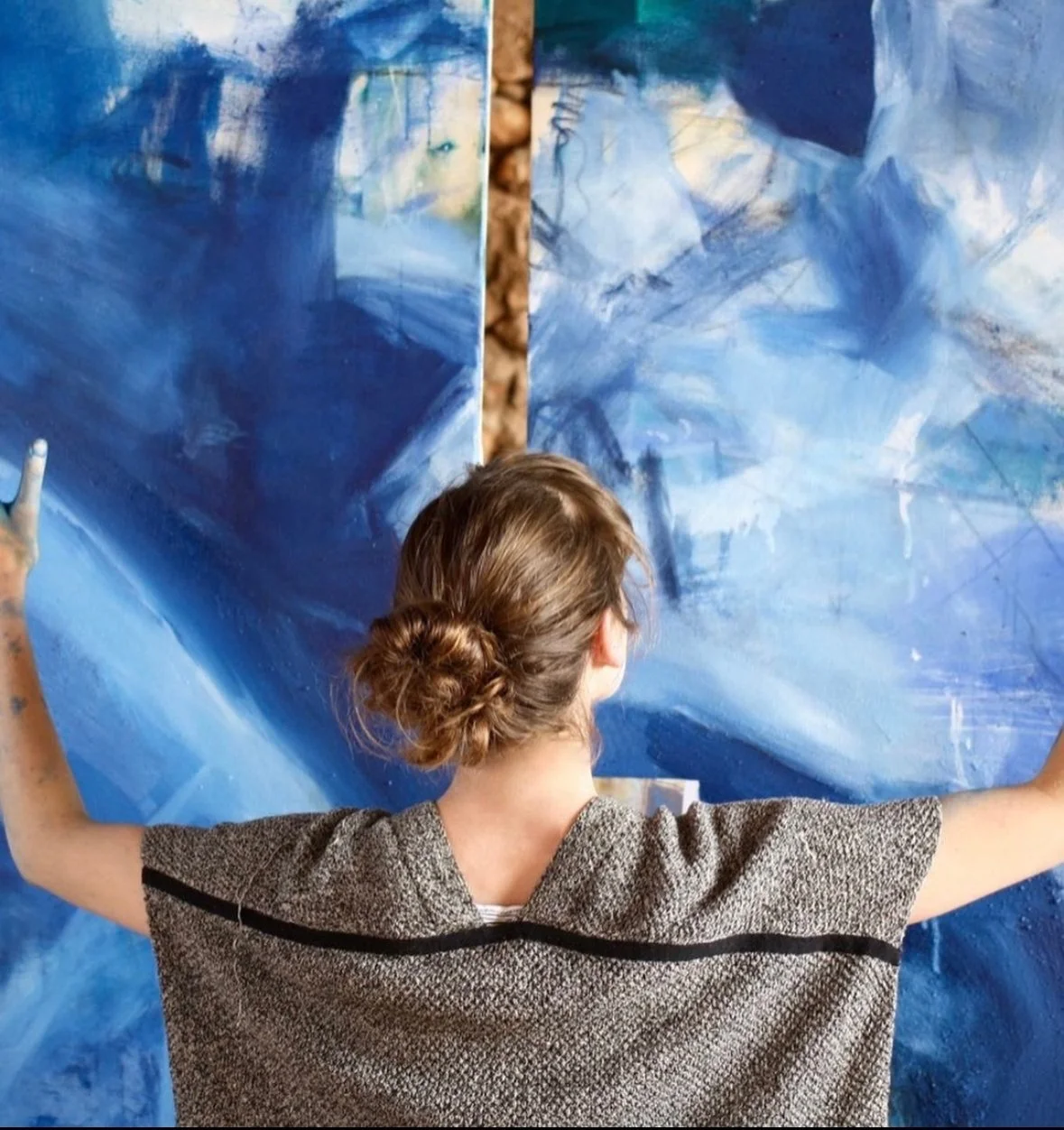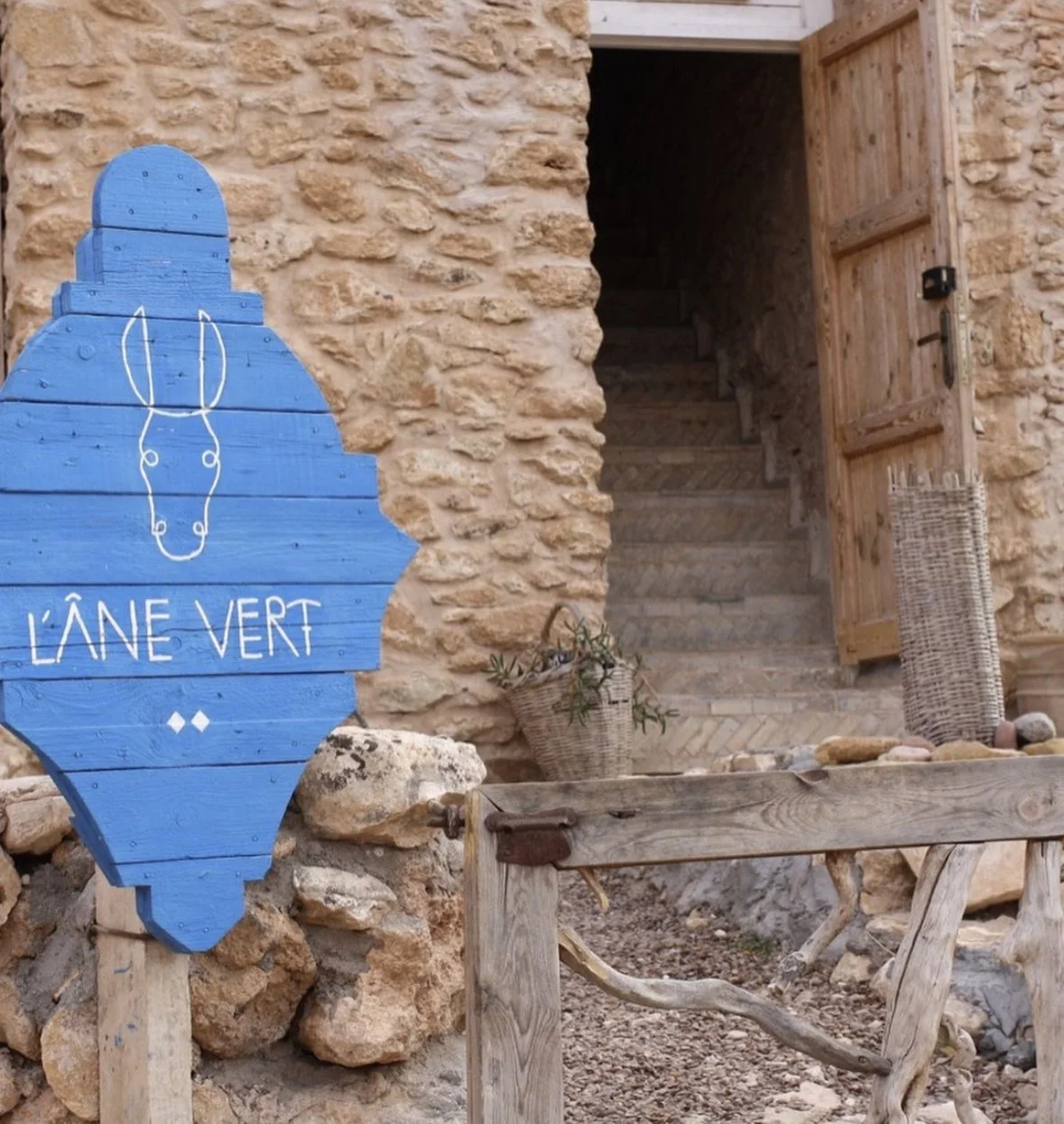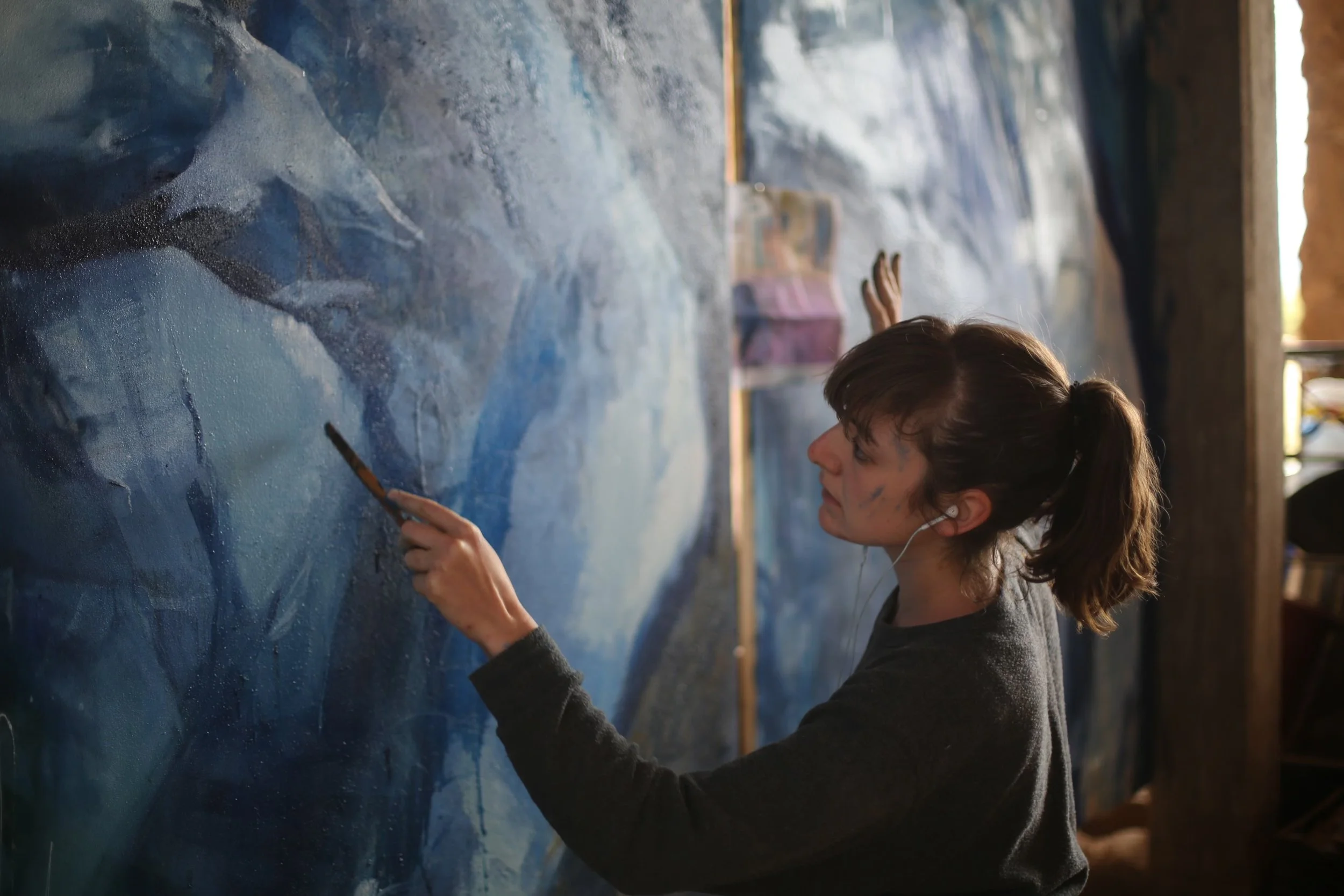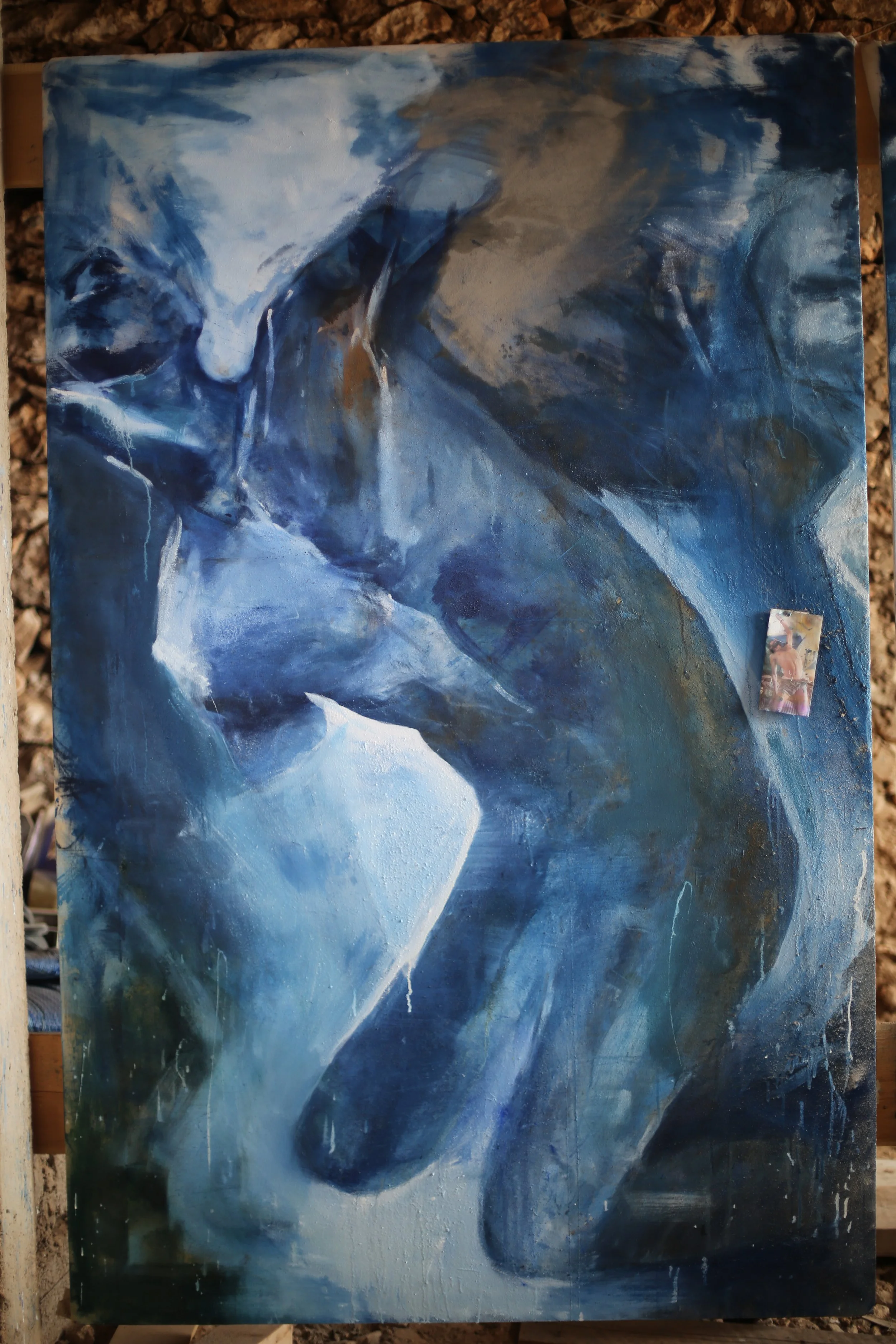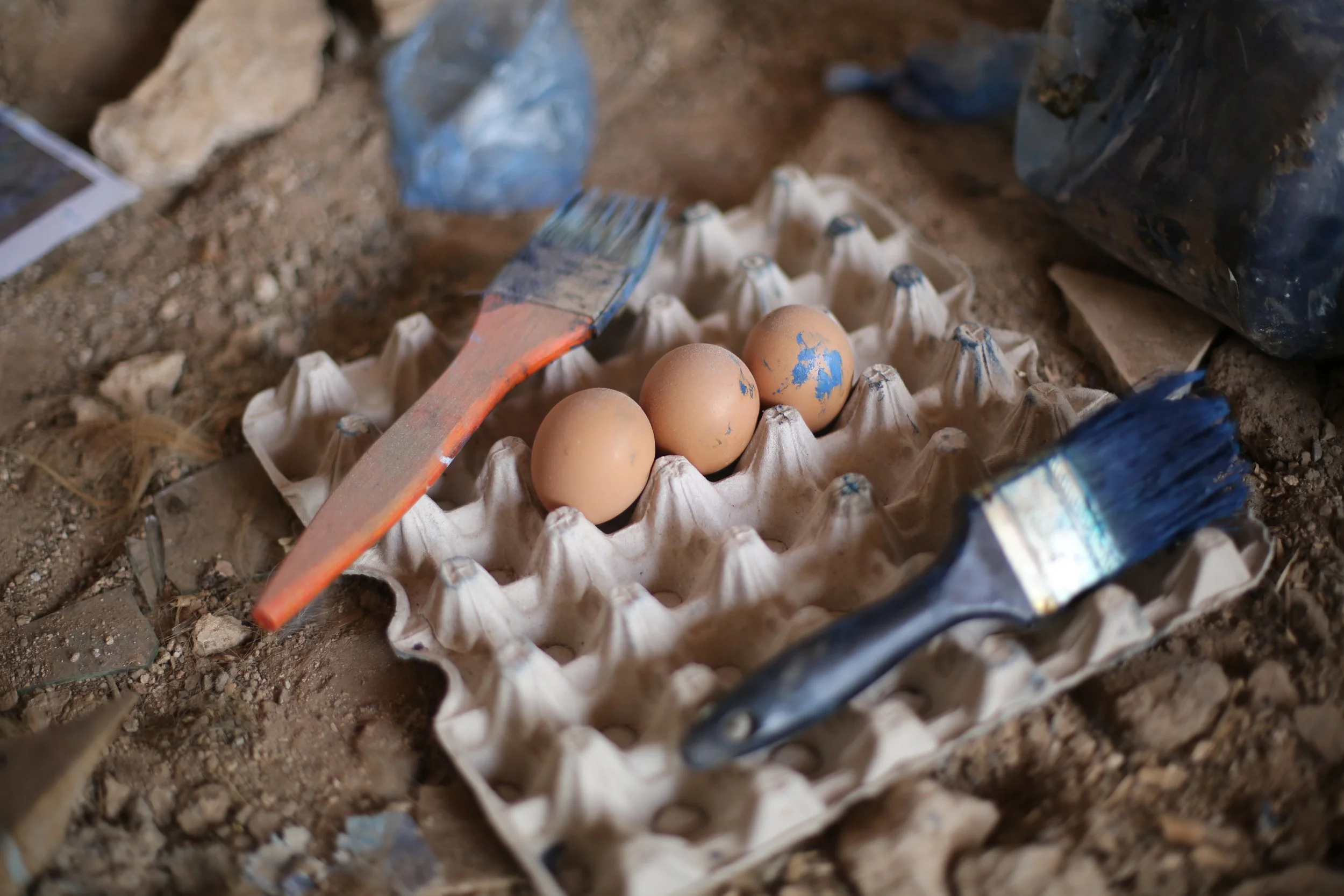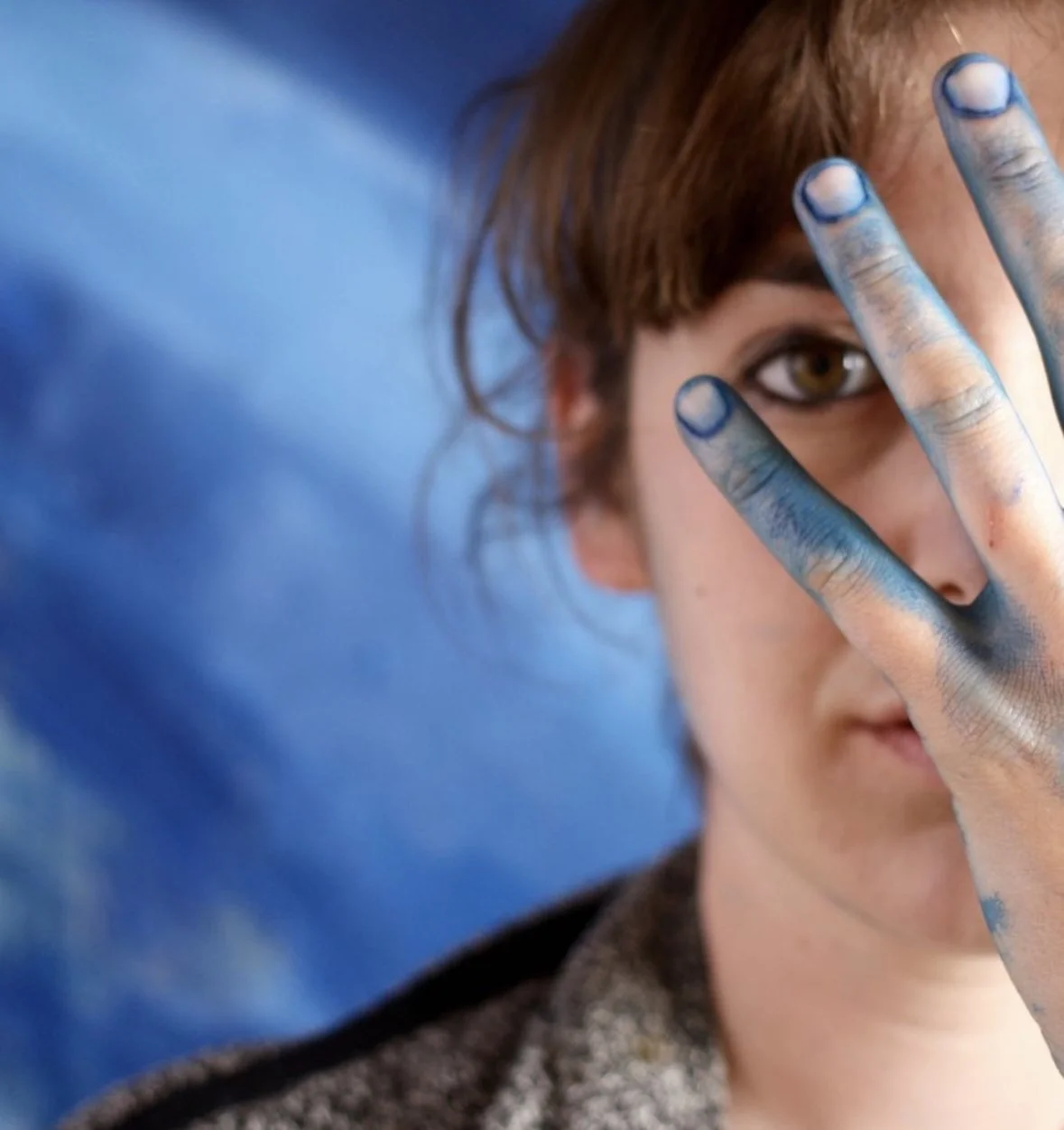LEFT RIGHT REPEAT ADVENTURE Magazine interview
So tell me a bit about your current series?
The current series that I’m working on here at L’Ane Vert is called the scroll series, and this piece is number 5 in the series. My intention is to create a total of 7, which I will complete in Spring 2017 – next year. I started the series in Spring 2014 and create 2 a year – one in Summer and one in Spring – always in a new place for a period of 4 weeks.
The idea of the scroll series is based on memory still lives. From my recent travels, which I do through another on-going collaborative project called Projet Valise, I gather different memories that I both internalise and record through my writings on an old typewriter which I carry around with me. When I’m creating one of these scrolls, these memories have been percolating, almost fermenting, for a period of time, and when I project them onto the canvas I always want to come from a place of sensitivity rather than emotion; a place of remembrance rather than nostalgia. This distinction is very important to me in my work, and the reason is – and I think this is also the reason that I travel – because I think that by translating what I find outside of myself I can find a connection and make my work accessible to others. Through these gathered memories, I’m finding a sort of underlying, almost universal, mythology. So at the end of the day, although these memories come from my personal experiences, when they are projected onto the canvas they become something more archetypal.
And then, finally, once I have created the piece, I leave it in the environment in which it was created. So they’re currently all over, scattered around in various places. My goal is, once I create the last one, to find some sort of grant or something to retrace my voyage and gather all of them – having little pop up exhibitions as the chapter of each scroll grows and grows.
And why the name – why is this project called the scroll series?
Each piece really is a scroll itself. When I’m done making them, I roll them up around scroll sticks into a sort of scroll. So the first one, there I was in Andalucía and I took the braches of a cherry tree to use as the scroll sticks. Then in Nice it was pieces of Bamboo. In New England, I used these poles that I found in the basement of my mother’s house… I believe by taking these small fragments from these particular places and by really examining them, it acts as something more universal; a window, opening up to something broader. Once I re-gather all of these pieces I want to find a residency or a studio space where I can literally sew each chapter together. In a final exhibition, I’ll have it so that people can quite literally turn the pages of this scroll so that it can become an interactive experience. Through interaction I believe one can have their own relationship with art - with these pieces - and find their own meaning. So what I present, it’s merely a suggestion, a sort of framework, for viewers to find their own dialogue.
I’ve seen from some of your previous pieces that each scroll seems to have an emerging, often classical theme – what’s your formula for intertwining these philosophies?
When I’m making a painting, I never have a set plan of what it’s gong to look like. It’s similar to a sort of unconscious meditation; I really just allow my hand to lead me. This is very important to me so that it becomes a tactile, almost primitive, form. But by doing that, by cutting away the intellect, I am able to reinforce my intention - to access these universal stories. What will happen at a certain point is that the canvas will almost start to speak to me, so that it becomes this conversation between what is in front of me and what I’m projecting. And at the end – this is fascinating, but this is number 5 and it’s happened 4 times now successfully – there will be certain themes that emerge. So the first one that I created was suddenly about Plato’s ideal versus the particular, the second was about Ovid’s metamorphose – Narcissus and Echo, etc, etc. So at the end, once I have created one of these scrolls, I will find, usually what ends up being – though I don’t have this as a set rule – some sort of classical reference. I have a suspicion I know what this one is going to be, but I’m not going to say anything – I’m pushing that away until a later point.
Photograph by Jake Borden
You’ve said you have a suspicion of the emerging theme for this piece, but what is the foundation for this particular piece – what would you say your starting point is?
Since the end of the creation of the first scroll, which I did in the south of Spain, I have been looking for pigments. It was actually after the suggestion of a friend of mine in this small little village in Andalucía that I cross the water and go to Morocco because I could find fantastic pigments there. And I wanted to but at the time I didn’t have the funds and ended up instead gathering my pigments from a landmine site in that area. So that has become a theme now – all of my pigments are gathered either from the earth or from that particular environment. So my fourth scroll for example was made in Detroit, and though it’s not a very natural setting, I went to the hardware store and got all of my red there. Since that first scroll I’ve had this desire to go to Morocco. I actually stumbled across L’Ane Vert itself because I was looking for blue pigment. Blue pigment was the only one that I couldn’t find. I found all the other colours I needed there in the earth, but I couldn’t find my blue. So I researched this online, and I typed in something along the lines of blue pigment into google and L’Ane Vert popped up. So I wrote an email and was told I was very welcome to come and work here. And I’m quite happy to be here now – it seems to be the perfect time.
So why blue, what prompted you to use blue as the primary piece for this particular scroll?
As you can see, the whole painting is created by a variety of different blues, the unique colour for this particular scroll within the scroll series as a whole. I’m fascinated with the colour blue. It’s one of the most illusive colours, one of the hardest to find in nature. Naively for a while I thought you might not even be able to find it in nature, so I was obsessed with this idea of how did the Moroccans create it, how did the Chinese create it, how did the Egyptians create it – and what was particular about these specific cultures that inspired them to create this colour. So this is actually another side project, my sort of search for blue, and I plan on going to these other countries and learning the origins and the technique of creating this blue. As a painter, I think it’s incredibly important to learn how to actually create the pigments. I got the blue pigment itself at a small little spice shop in Essaouira. These blues come from shells, or the rocks of the Atlas mountains, or the flowers you find up north near Chefchaouen. And so it’s all a variety.
Can you tell me how it is that you mix your pigment to turn it into paint?
Once I have found the pigments I want to use, I transform their raw form into tempera. I use linseed oil to create an oil-based paint and then add the yellow of an egg yolk. It was really on the recommendation of an Italian friend I met in Nice who advised me to look into tempera, an old renaissance technique that uses the yolk of an egg to basically act as a binder so it will last longer. After that, I found this wonderful old classic book explaining how to create it. It’s wonderful, almost like a meditation. Something I really love about it is the process – how you take the egg yolk and you dry it, and then you puncture a very small hole in it and you add it. Everything is measured out – a bit like cooking. And it really works. I use it for most of my work at this point in the hope that the pieces that I create will last a bit longer.
Photograph by Jake Borden
We’ve talked about where this project began, but do you have a view to the environments that you might want to create your next two pieces – specifically your final piece in?
I had this idea from the beginning that for the final piece I want to create it on a cargo ship. The reason being that a cargo ship for me is very symbolic of a bridge, a sort of thread between cultures. And it’s such a necessity in our modern day world for our trade, our everyday goods. And the ocean as well is very prevalent in my work. The ocean is really the unconscious, or the womb of the world. To be in that space and setting, on a cargo ship, for a period of 4 weeks; to work in an environment which would juxtapose modern culture, that is something I am very interested in. I just know that that is where I want to make the last one – and I know I will find a way.
And tell me about your suitcase that you carry with you everywhere.
So the suitcase comes from when I was a student in Paris - which I was until 2012. And that year I found this lovely old suitcase outside where I was living and it turned out to be the retired gardener’s. And he stopped me and he said to me, I’ve travelled all over the world with this suitcase. And he showed me, and we talked, and then he gave it to me. And it felt like a blessing. I had never really felt at home anywhere but in Paris and I decided that this suitcase was going to be my home, and I called it Valise. And because it was my home, I was completely free and could travel anywhere.
Your suitcases name is Valise! Is this suitcase the foundation of your aforementioned collaborative ‘Projet Valise’?
Yes, it is, absolutely. It began when I went on this summer trip with my partner at the time; we were going to travel from Salzburg, Austria, back to Paris in her car. I was thrilled because I had sold 2 paintings and had just enough money to buy some good art supplies, which I put into the suitcase. That first night of the trip we stayed in a hostel, and then the second night we didn’t know where to stay. Budget was a big thing, but we had a tent. And so my partner, being the charmer that she is, she said, let’s go knock on this person’s door and see if we can spend the night in their garden with our tent. I said that’s absolutely crazy, why would we do such a thing, let’s just put our tent out in the middle of the forest. But maybe due to her Austrian heritage, her nature, she wanted to be in the safety of someone else’s place rather than the wild woods. So she did the knocking and I had my suitcase in hand. And the outcome was that these people were profoundly generous and kind. We ended up having beautiful conversations with them into the night without understanding each others' languages and not only did they let us stay but they gave us a bed. They were so generous. My partner, she said, you have to make them a painting as thanks. So I did, I woke up at dawn and painted them a picture with my newly bought art supplies. And it was such a wonderful exchange with these people that we decided to do the rest of the trip that way – knocking on people’s doors and exchanging paintings as thanks. And my partner began to photograph these paintings and we took down the addresses and it became the beginning of this other project, Projet Valise, which was fuelled by the art supplies I had been carrying in my suitcase.
I know you are currently travelling and in the midst of this series, but are you looking to find a more permanent base at some point?
Yes. It’s interesting, my suitcase is actually broken at this point – it’s a little fragile. And though it’s really held up and has gone everywhere with me and I do intend to fix it (in fact I already have in mind who I am going to ask to do it), I really begin to feel that I need the security of one place with 4 walls, to work through the echoes of my recent experiences. So I’m incredibly grateful for my travels, but at the same time, to have the stability of a studio is something I’m seriously looking into. I’m not quite sure where it is going to be yet. It could be Germany, it could be Detroit, it could be New York – I’m open-minded.
